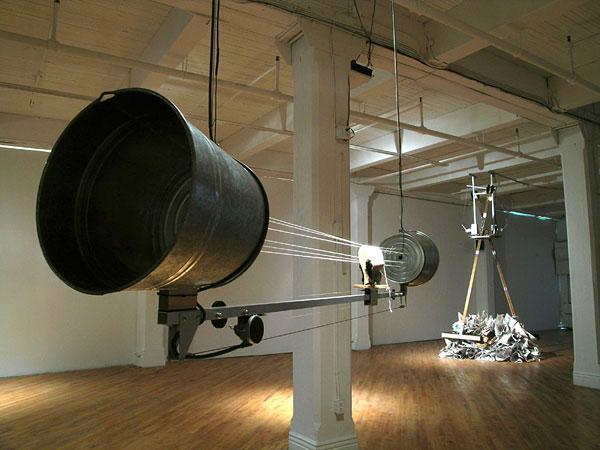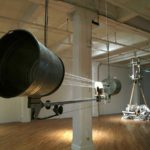Interestingly, Winnipeg has played host to such explorations since 1998 with the Send and Receive festival of sound. This week, the 10th edition of the festival brings together an international roster of genre-busting musicians and sound-source rule-breakers.
As performances, installations, workshops and film screenings launch at galleries and venues around the city, Send and Receive seems to be proving again that it’s the little sound art festival that could. Artistic director Crys Cole says, “I think because Send and Receive doesn’t fall neatly into the [artistic] categories that exist, it’s an important kind of crazy element within the community.”
Cole herself is a minimalist sound artist and daughter of Winnipeg who returned to take up the artistic director post left empty when the festival’s first director, Steve Bates, left four years ago. Coming in after a period that saw Send and Receive flounder and take a year off, Cole and the programming committee have focused on creating a strong lineup that reflects the recent history of sound art.
“Most of the artists we’re working with have been doing this for around 20 years,” Cole says. “They’re established artists who’ve done their time and had an impact on the industry, on the field of sound art.”
The first of the three major festival events, which takes place on October 18, is what Cole calls the festival’s “wildcard.” For it, Virginia-based dearraindrop artist collective will bring their signature party atmosphere as well as their handmade instruments and eye-popping visuals. The same night also features the DIY-style, punk-for-iconoclasts sounds of Vancouverite Kenny Roux, and it sees Winnipeg sound collager Fletcher Pratt experimenting with tape machines and oscillators, among other devices, as well.
“Each night has a theme, but they don’t necessarily flow together,” Cole says. “From one night to the next you could have a completely different feeling, from very musical, composition-based work to more raw, heavy drone work.”
One could describe Australia-based free jazz veteran and guitar experimenter Oren Ambarchi’s work as being in that drone category. Ambarchi performs on the final day of the fest, October 25, as part of a concentrated listening event called “Breaking Walls,” which is organized by Montreal-based curator Eric Mattson. The show is all about genre-bending and transcendence, and features another Montrealer, Alexandre St-Onge, alongside Finnish-German drone and noise duo Angel.
Cole emphasizes the significance of the crossover artists on the program. “It’s important to have those things that tie it to a bit of musicality, to introduce people to different ways of listening. So people can go, ‘Oh, I recognize that he [Ambarchi] plays guitar and he’s working with musical metaphors I can grasp, but then he’s taking it somewhere very different,’” she says.
At the same time, the festival includes a lot of conceptual work and pure sound—such as Winnipegger Bryan Besant’s The Great Divide, an installation at Outworks Gallery that generates audio from images of the visually metered Arlington Bridge and inner city train yard.
For audience members encountering such work, Cole suggests the best context may be not to have one.
“I think people from a more formal background are always referencing these structures that they see as rules, you know, and if you’re playing with them you’re breaking the rules, you’re just being silly, it’s not valid as a form of music,” she says. “I don’t believe in the establishment as being any more valid than someone getting up there and deciding to express themselves creatively.”
So while sound art’s institutional acceptance may be on an upswing from MoMA to Tate Modern, Send and Receive promises to live up to a spirit of being on the fringe, to delight listeners truly expecting the unexpected.

 Catherine Béchard and Sabin Hudon, "In Between Sound and Abstractions", exhibition at aceartinc. in conjunction with Send and Receive 2005, photo Catherine Béchard
Catherine Béchard and Sabin Hudon, "In Between Sound and Abstractions", exhibition at aceartinc. in conjunction with Send and Receive 2005, photo Catherine Béchard








